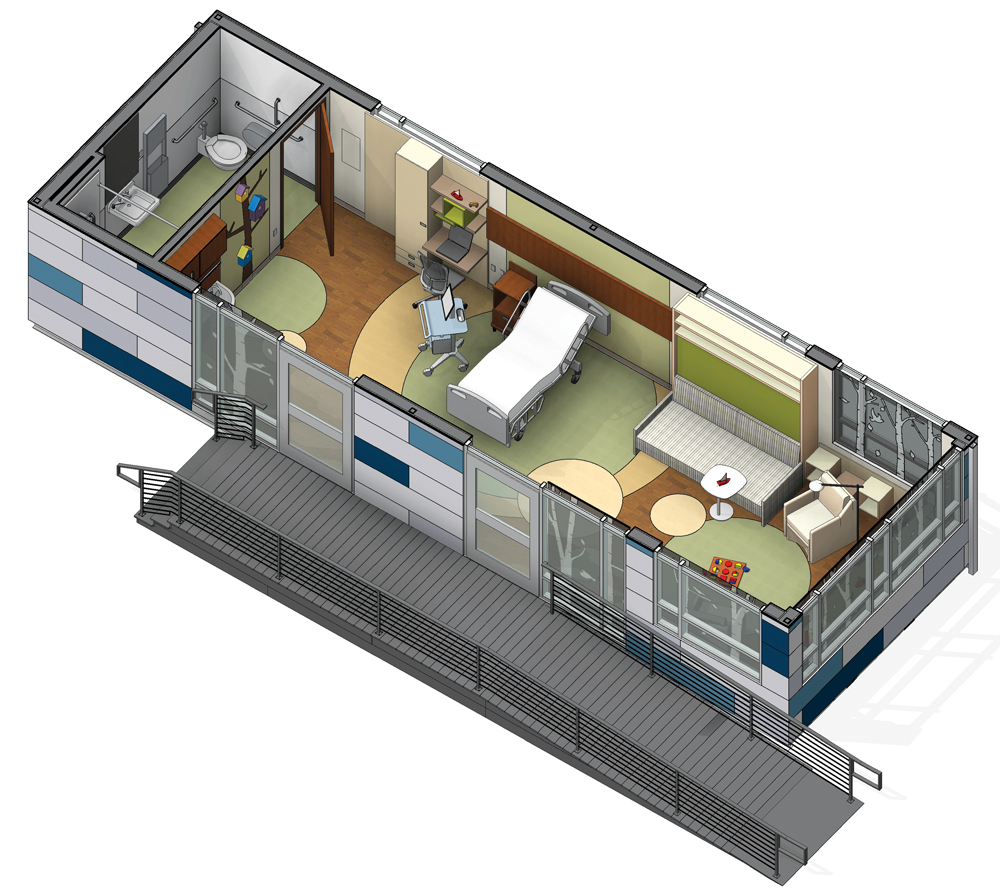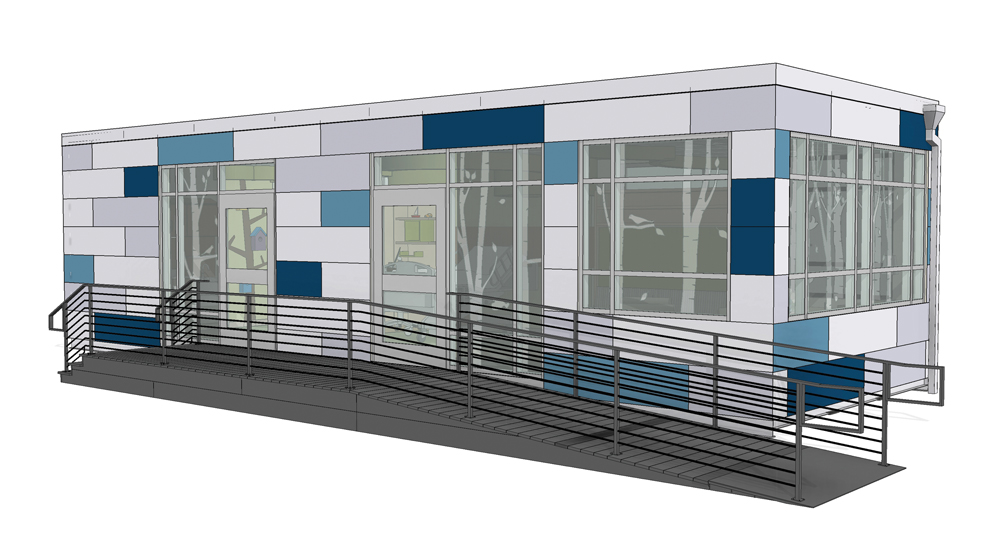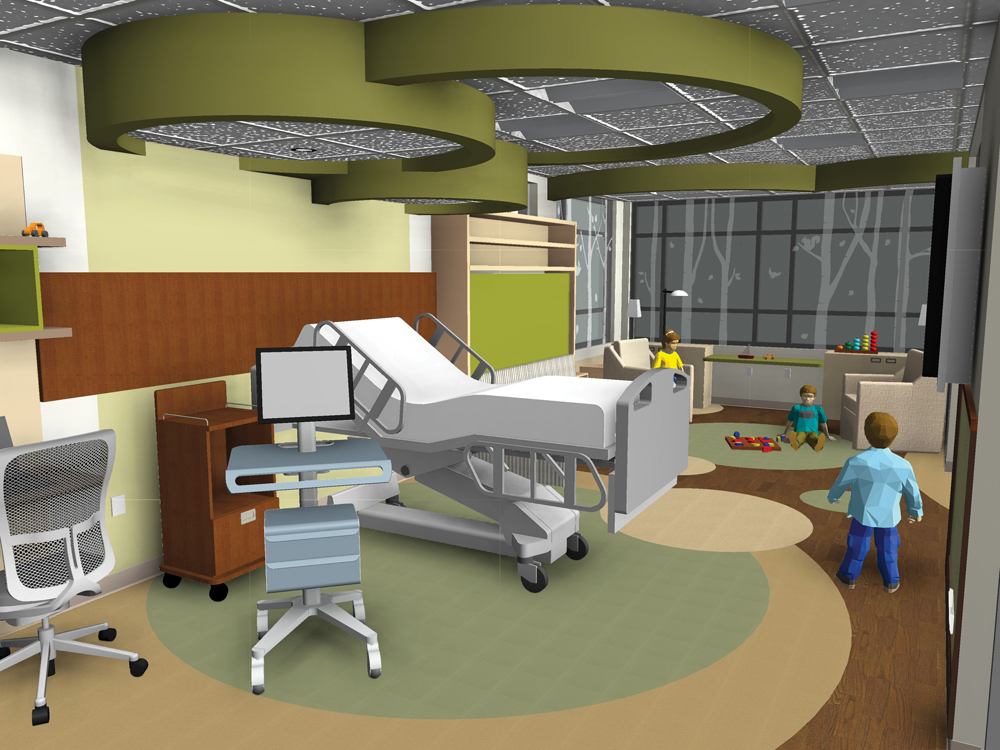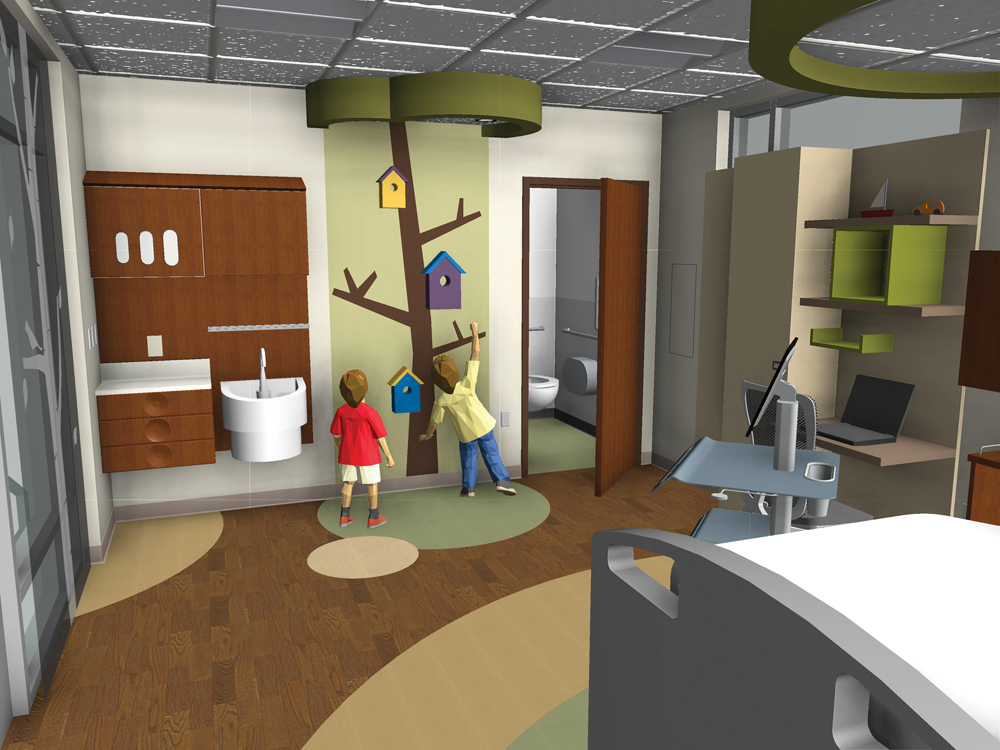The model for healthcare delivery has changed dramatically over the past 25 years or so, in part by the realization that many surgeries, treatments, and procedures can be better accommodated through the advanced technology now available in highly regulated ambulatory care centers.
This can speed up the treatment and recovery process for patients and alleviate pressure on hospitals. Patients may be treated faster and more efficiently when these choices are made available to them. These outpatient facilities are becoming more specialized as well, from general urgent care clinics to specialized surgery centers and from geriatrics to pediatrics.
Similarly, the model for healthcare facility construction is also changing dramatically. Off-site construction is becoming widely recognized as a faster, safer, more efficient, and inherently greener way to build, and the resulting benefits to the healthcare market are countless.
Building off site doesn’t just pertain to ambulatory care centers. Medical offices, imaging clinics, hospital wings, and even hospitals are being designed and constructed today with permanent modular construction (PMC) technology. This industry also offers advanced building science technology and is highly regulated.

The entire module will be completed at the plant and delivered to the Greenbuild site in one transport load.
Building off site allows the building construction to occur in a controlled environment concurrently with the site development, resulting in improved quality management and a significantly reduced schedule. This means healthcare facilities can open up to 50% sooner and patients can get the specialized care they need in their community faster.
A Greener Way to Build
This alternative project delivery method is gaining momentum as an inherently greener way to build, from the quality of construction and excellent waste management programs at the plant, to the significantly reduced on-site activity. By shortening the schedule and building off site, the noise, pollutants, disruption, and disturbance to the surrounding community or to the hospital, staff, and patients are greatly minimized. Vehicular traffic is reduced due to fewer material deliveries and workforce travel to and from the project site, and safety and security are significantly improved.
Designing with permanent modular construction up front can enhance the effectiveness of the process, and can build in future flexibility of an ambulatory care center as treatment specialties or even demographics change. Additions can be built off site and delivered and installed quickly and efficiently. And in rare instances where a clinic may be no longer practical in a particular geographical location, by its process, modular construction methodology allows the deconstruction, relocation, and reconstruction so that one abandoned facility doesn’t have to remain empty while another is being constructed elsewhere. This is a great example of adaptability and reuse for a more sustainable built environment.
The Greenbuild ‘Pedia-Pod’
For specialized care, whether ambulatory centers or hospital wings, caring for the individual person and providing a suitable environment for him or her is important to the overall well-being of that patient. For this model, we have designed and constructed a pediatric treatment building module called Pedia-Pod that is “kid-friendly,” offering a unique and cheerful environment where a child can feel most comfortable.
Our display model is a 14x42-foot module showcasing a range of interior finishes, a specialized bathroom, treatment/recovery area, workstation for medical staff, and a waiting area for parents that doubles as a play area for children. The unit also displays some of the structural elements, the building envelope, interior and exterior finishes, doors and fenestration, as well as electrical and mechanical, to demonstrate how an entire clinic could be designed and finished. Modular facilities can be customized to suit the particular healthcare facility requirement.

The building has a high recycled content, with structural steel framing, steel deck, and steel stud infill.
The Pedia-Pod concept and its design principles can be applied to any type of healthcare facility, and it displays the high level of architectural detailing, quality, and sustainable design principles that permanent modular construction (PMC) can produce today.
Pedia-Pod Green Building Highlights
The building design, created using REVIT within the BIM platform, blends a welcoming environment with architectural form and medical function and integrates a number of design principles, practices, and products that could make the building worthy of a LEED BD+C Gold application. Materials were carefully chosen for their sustainable attributes, and will be showcased for attendees to see within the Pedia-Pod location.
Structural steel framing, steel deck, and steel stud infill give this durable building a very high recycled content. The building envelope contains closed-cell spray foam insulation with recycled content in the roof and floor, with Greenguard-certified sustainable insulation in the walls, a specialized weather/rain screen barrier, lightweight cement board subfloor, and mold- and moisture-resistant wall sheathing with 95% recycled content. It features a white roof membrane with an SRI index of 99. The exterior cladding is a beautiful architectural fibre cement panel containing FSC wood pulp and fly ash waste from landfills.
One unique interior drywall product actively removes VOCs from the air while the other is a noise-reducing board. Both are moisture and mold resistant. Interior paint is zero-VOC formula, and the floor finish is a long-lasting, slip-resistant product with recycled content requiring no harsh chemicals for cleaning. Millwork contains FSC-certified board.
The building also features high-performance windows, energy-efficient lighting and controls, and water-saving plumbing fixtures.
Modular Construction Process of the Pedia-Pod
Once the structural steel frame is completed in the NRB steel fabrication shop, it is moved to the production area where it will be completed with NRB’s skilled workforce and trades. Materials that are pre-ordered or free-issued for this building are safely stored in the warehouse, for use when needed. Materials that may be left over after construction are often re-inventoried for use in a future NRB project rather than recycled or sent to landfill, reducing waste.
The Pedia-Pod will be 100% completed at the plant, including all interior and exterior finishes, wiring, ductwork, plumbing fixtures, counters, and cabinets, and prepared for shipping. Only one transport load is needed for the complete building to the site.
The Pedia-Pod was designed and constructed by NRB (USA) in Ephrata, Pa., in collaboration with the editorial/business staff of Building Design+Construction. Sustainable products and systems were supplied by sponsoring building product manufacturers.
About NRB
NRB is dedicated to the advancement of permanent modular construction technology and green building practices. NRB is a vertically integrated company that offers building design assistance using BIM technology, off-site construction in a controlled environment, and on-site installation. NRB is headquartered in Grimsby, Ont., since 1979 with a U.S. facility in Ephrata, Pa., since 2003. For more information please visit www.nrb-inc.com.
Related Stories
| Jan 4, 2011
Product of the Week: Zinc cladding helps border crossing blend in with surroundings
Zinc panels provide natural-looking, durable cladding for an administrative building and toll canopies at the newly expanded Queenstown Plaza U.S.-Canada border crossing at the Niagara Gorge. Toronto’s Moriyama & Teshima Architects chose the zinc alloy panels for their ability to blend with the structures’ scenic surroundings, as well as for their low maintenance and sustainable qualities. The structures incorporate 14,000 sf of Rheinzink’s branded Angled Standing Seam and Reveal Panels in graphite gray.
| Jan 4, 2011
6 green building trends to watch in 2011
According to a report by New York-based JWT Intelligence, there are six key green building trends to watch in 2011, including: 3D printing, biomimicry, and more transparent and accurate green claims.
| Jan 4, 2011
LEED standards under fire in NYC
This year, for the first time, owners of 25,000 commercial properties in New York must report their buildings’ energy use to the city. However, LEED doesn’t measure energy use and costs, something a growing number of engineers, architects, and landlords insist must be done. Their concerns and a general blossoming of environmental awareness have spawned a host of rating systems that could test LEED’s dominance.
| Jan 4, 2011
LEED 2012: 10 changes you should know about
The USGBC is beginning its review and planning for the next version of LEED—LEED 2012. The draft version of LEED 2012 is currently in the first of at least two public comment periods, and it’s important to take a look at proposed changes to see the direction USGBC is taking, the plans they have for LEED, and—most importantly—how they affect you.
| Jan 4, 2011
California buildings: now even more efficient
New buildings in California must now be more sustainable under the state’s Green Building Standards Code, which took effect with the new year. CALGreen, the first statewide green building code in the country, requires new buildings to be more energy efficient, use less water, and emit fewer pollutants, among many other requirements. And they have the potential to affect LEED ratings.
| Jan 4, 2011
New Years resolutions for architects, urban planners, and real estate developers
Roger K. Lewis, an architect and a professor emeritus of architecture at the University of Maryland, writes in the Washington Post about New Years resolutions he proposes for anyone involved in influencing buildings and cities. Among his proposals: recycle and reuse aging or obsolete buildings instead of demolishing them; amend or eliminate out-of-date, obstructive, and overly complex zoning ordinances; and make all city and suburban streets safe for cyclists and pedestrians.
| Jan 4, 2011
An official bargain, White House loses $79 million in property value
One of the most famous office buildings in the world—and the official the residence of the President of the United States—is now worth only $251.6 million. At the top of the housing boom, the 132-room complex was valued at $331.5 million (still sounds like a bargain), according to Zillow, the online real estate marketplace. That reflects a decline in property value of about 24%.
| Jan 4, 2011
Luxury hotel planned for Palace of Versailles
Want to spend the night at the Palace of Versailles? The Hotel du Grand Controle, a 1680s mansion built on palace grounds for the king's treasurer and vacant since the French Revolution, will soon be turned into a luxury hotel. Versailles is partnering with Belgian hotel company Ivy International to restore the dilapidated estate into a 23-room luxury hotel. Guests can live like a king or queen for a while—and keep their heads.
| Jan 4, 2011
Grubb & Ellis predicts commercial real estate recovery
Grubb & Ellis Company, a leading real estate services and investment firm, released its 2011 Real Estate Forecast, which foresees the start of a slow recovery in the leasing market for all property types in the coming year.
| Jan 4, 2011
Furniture Sustainability Standard - Approved by ANSI and Released for Distribution
BIFMA International recently announced formal American National Standards Institute (ANSI) approval and release of the ANSI/BIFMA e3-2010 Furniture Sustainability Standard. The e3 standard represents a structured methodology to evaluate the "sustainable" attributes of furniture products and constitutes the technical criteria of the level product certification program.











